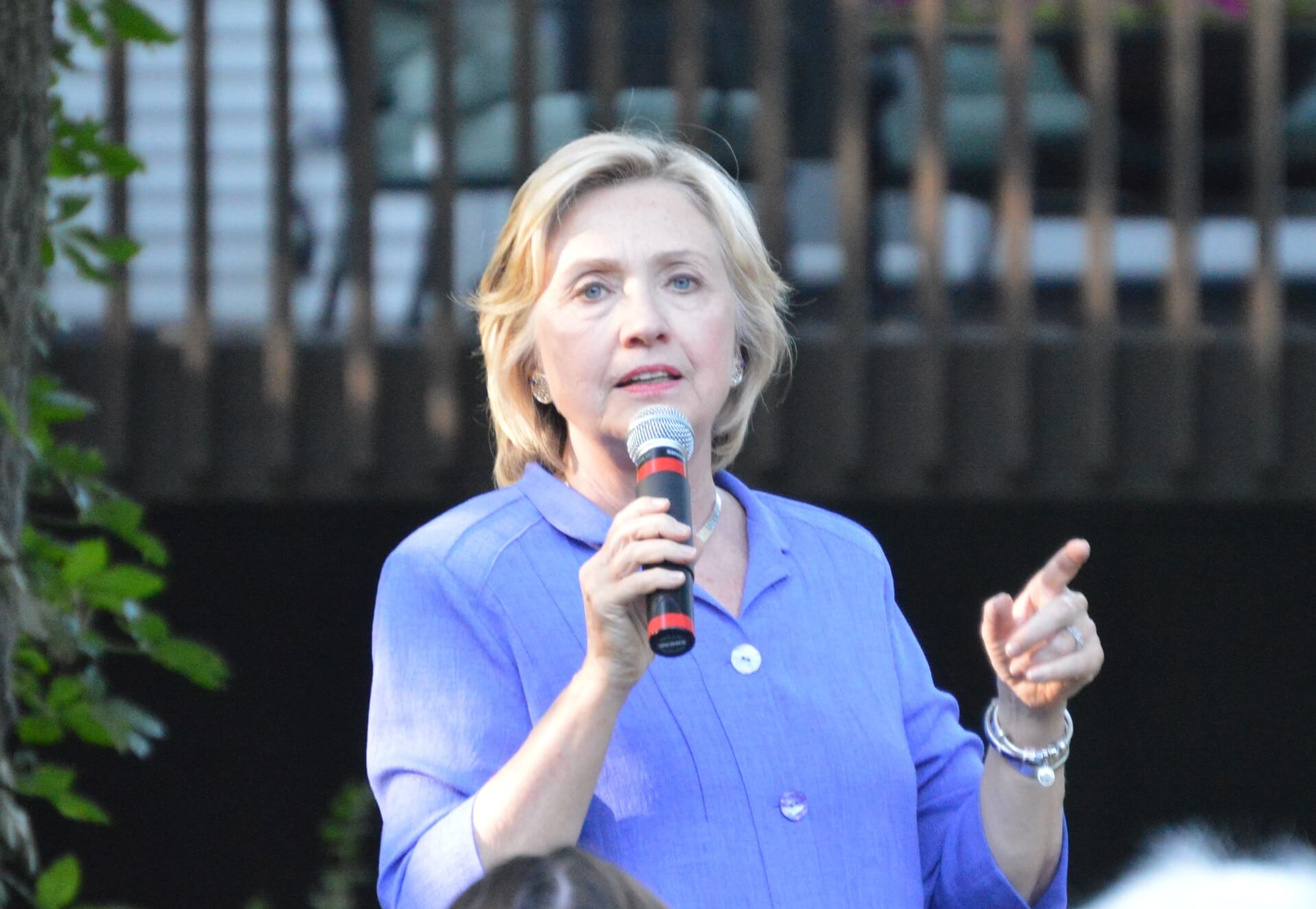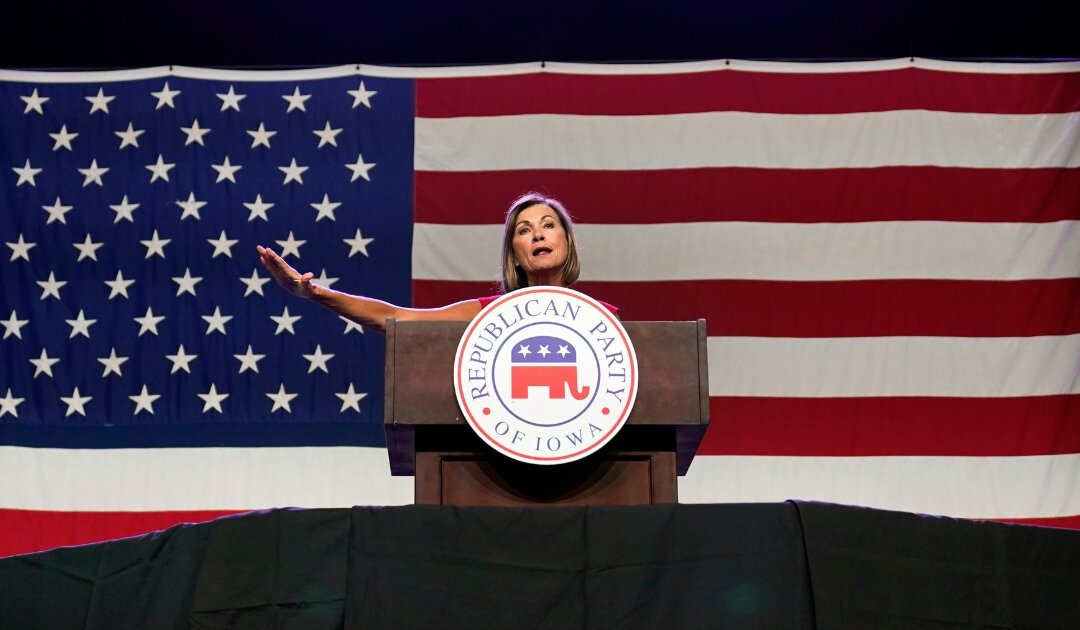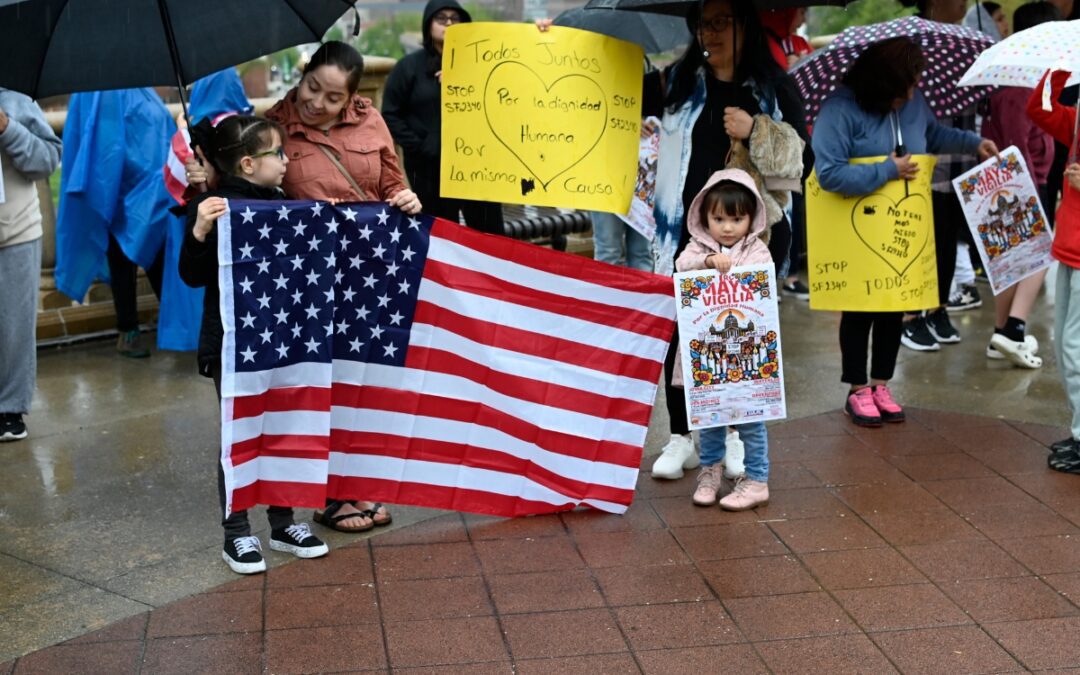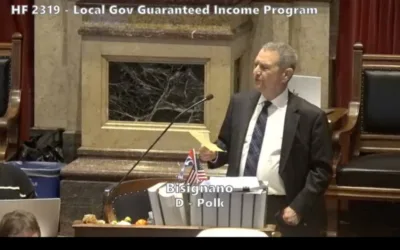
It’s different this time.
That must have been the thought going through Hillary Clinton’s mind as her campaign van crossed the border into Iowa days after her official announcement in April. It was a fun, impromptu-like start to her second presidential run, the idea that the most-watched woman in the world would just jump in a van and go on a nearly 1,000-mile road trip right to the very state that upended her hopes in 2008. That was the type of break with the past she needed, and, for a time, it seemed to work.
The media circus may have been maxed out for that initial trip, but Clinton herself mostly avoided it with a series of more intimate events that brought her face-to-face with small groups of Iowans. She learned voters’ personal stories in meaningful conversations. She connected with them. She was having fun.
More importantly, her potential primary competition was slow to develop. Somehow the overwhelming front-runner enjoyed the field to herself for over a month, as the Draft Elizabeth Warren effort fizzled and the chaos in Baltimore delayed and damaged Martin O’Malley’s launch. Her Iowa operation got a tremendous head start, and the path forward looked surprisingly smooth.
But it was good until it wasn’t, and the warning signs began to emerge. The private email server story that started in March refused to fade away over the summer. Bernie Sanders entered the race and got hot much faster than anyone, even Sanders himself, thought. A real reluctance to have a “coronation” predictably emerged within the party, yet the level of enthusiasm at Clinton events started to wane, outside of her most ardent grass-roots supporters.
This was always expected, her campaign explains. Real competition and a tightening in the race was always a certainty as Democrats weighed their options. But is she really at danger of losing any of the early states or even the nomination?
No.
It’s different this time.
And then the political dog days of August came around, and the situation grew worrisome. Tough questions over her email server refused to abate, the slow trickle of every-few-weeks email releases driving it on along with Clinton’s own changing answers, and press coverage of the controversy eclipsed all other topics. Her poll numbers suffered as a result, with her favorability and trustworthy ratings taking a drastic nosedive.
Meanwhile, the Sanders surge continued past the ceiling most assumed it would level off at. Multiple polls out of New Hampshire, the state that bailed out Clinton’s campaign in 2008, showed the Vermont independent socialist in the lead. The often-accurate Iowa Poll from Ann Selzer showed Sanders closing to within seven points in the first caucus state at the beginning of September. And Sanders’ movement grew, drawing massive crowds all over the country and in Iowa as well.
Now Clinton faces the prospect of Vice President Joe Biden entering the race, encouraged by many Democrats who worry Clinton is faltering too much to lead the party to victory in 2016.
So here she stands, a little over four months out from the Iowa Caucus: sinking in the polls, her personal credibility questioned by voters and facing an insurgent outsider who’s capturing the hearts of Democrats while another formidable rival’s entrance looms.
It’s different this time?
Most would still contend that, yes, it is a different situation from 2007. But by how much?
Starting Line spoke this week with a considerable number of Iowa Democratic leaders, activists, insiders and staff about what’s going both right and wrong with the Clinton campaign and what risks they are realistically facing. That, along with my own observations from the 15 Clinton events I’ve attended since her launch, makes up this analysis of where she stands in Iowa 131 days from caucus night.
The Email Story Disaster
Many of the Democrats Starting Line spoke with felt that Clinton is needlessly struggling, and no other issue captures that problem as the email server controversy does. The story first broke in March. It was still dominating the headlines the first week of September. Only now is it finally starting to fade some.
Some in the campaign feel the story won’t really affect people’s vote as much as predicted, but the more concerning thing about this episode is just how long it took the campaign to address it. Clinton’s response on the topic varied widely for months. Only when she finally outright apologized for it did things finally start to get better. How on earth did it take the campaign that long to figure it out? This controversy blocked out their whole message. Most would have realized that just apologizing and moving on was the way to, well, move on.
The Authenticity Factor
The reason the email story caused such headaches was because it spoke to Clinton’s biggest underlying weakness: that she’s seen as untrustworthy, inauthentic and calculating. This is nothing new for Clinton. While the dynamics of 2016 are considerably different than 2008, the difficulties she faces this time stem from the exact same issues. Now they’re already into a reboot mode, trying out new messaging, events and ways to humanize Clinton.
As one leading Democrat mentioned to Starting Line, it’s puzzling that there was a Clinton 1.0 in the first place. After all the experiences from the 2008 campaign, could they not have anticipated these issues better? Her 2016 team is significantly better than the one she assembled in 2008. The old internal drama is gone. And they are doing a great many things right, most of which the general public never sees. Yet on the big issues, they’re falling into the exact same traps as in 2008.
The reboot was also clumsily handled with the announcement of it in the New York Times story. That was beyond bizarre. Why signal it to the world? Why not just do it? You realize other people read the New York Times too, right? It was disappointingly reminiscent of February 2008, when the Clinton team took to cable news shows to argue how her lead in Superdelegates would offset her losses among real voters and allow her to still win the nomination. It was incredibly tone deaf to the wider primary electorate at large, and was a message aimed at reassuring top donors and endorsers, a constituency that would have sufficed with a memo. Like then, it seems Clinton’s national team crafts their message too often to the press, donors and the Democratic insider crowd, as opposed to the primary-going voters.
These, of course, are largely national matters for Clinton, which could have likely been handled better by her national team. However, the effects are being felt in Iowa.
The Enthusiasm Gap
You don’t have to attend that many Clinton and Sanders events to see the clear difference on the ground. In a recent swing around the Labor Day weekend, Sanders drew very large crowds on college campuses, a Native American settlement, and in working class towns. He brought out 500 fans and interested Democrats in labor-heavy Burlington. Clinton had around 200 in the same city a few days later. Sanders’ crowds cheer nearly every minute and give standing ovations to the Senator’s hour-plus-long stemwinders. Clinton’s audiences sit politely and nod their head along to Clinton’s policy points (with the exception of her major event speeches at the Hall of Fame and Wing Ding dinners, where she’s easily dominated the competition).
Part of this is by design. As several Iowa Democrats pointed out, Clinton’s pitch has been aimed at people’s minds, rather than hearts. She’s the most experienced, the most electable, the most focused and knowledgeable on the issues that people care about. And that strategy may end up being the correct one, as some activists have noticed an under-the-radar, steady burn of new supporters joining her campaign.
But it’s also one that seems outdated to the times. 2015 has seen candidates rise on the force of their personality and how strong they present themselves. Sanders’ message has been focused, simple and powerful, appealing to the general frustration left-leaning voters feel. Clinton’s message changes with nearly every audience, and I’ve heard reports that their team can be too reactive – a certain constituency group complains of access one week, the next she’s addressing their organization. That could be seen as responsive to feedback or lacking a clear, coherent strategy that you stick to.
That’s an issue that’s always been around with Clinton, and it’s understandable. In 2008 two of her best moments came from completely opposite appeals. The moment when she teared up with a voter in New Hampshire helped soften her image and led to a life-saving win in the state’s primary. She bounced back after the Super Tuesday losses with her angry “Meet me in Ohio” challenge to Obama, making her look like a tough fighter. So which persona do you choose?
The Organizing Firewall
All of these problems may not matter in the end. Anticipating a tough fight, the Clinton campaign prepared for Iowa from the start. On the day she announced, 21 very experienced field organizers were ready to go on the ground. They now boast the largest organizing operation by far, with 17 field offices and two waves of 100 fellows hitting the ground in summer and fall. By all accounts, it’s one of the most professional caucus organizing efforts Iowa has ever seen.
Reports on how many volunteers the campaign sees coming through their field office doors vary widely from activists around the state. I’ve seen a healthy operation when I’ve been out. And others note that Clinton enjoys passionate volunteer cores in most counties, though some don’t see it expanding much. The campaign says they’re constantly building their caucus night structure, training engagement directors, precinct captains and phone bank and canvass captains now. That’s the type of ramp-up strategy that sometimes takes time to witness, but pays off in the end.
On the other side, Sanders has run an inclusive and aggressive Iowa Caucus operation, even if they got started and built up a little late. They’re recruiting new people into the process, and could flood precincts on caucus night with first-time caucus-goers. Many people scoff at the idea that the young voters who show up to Sanders events will really go caucus, but we’ve seen it happen before. O’Malley’s team is running a more traditional caucus campaign, and it’s working for them so far. But most activists and insiders wonder if he’ll ever catch on enough to utilize the groundwork he’s built in Iowa.
Still, activists see a stronger Clinton operation all around the state. Perhaps part of that is because Sanders is reaching into communities not known by the typical activist crowd, but it’s still an issue. Everyone Starting Line spoke with agreed that Clinton’s field team is better than 2008’s. They also don’t see Sanders as putting together an Obama-like coalition.
The Myth of Endorsements and the Scripted Events
The Iowa operation isn’t perfect, though. The endorsement roll-outs of big-name Iowans probably didn’t change anyone’s vote, and the emphasis on some of them, like a political consultant who briefly worked for the Iowa campaign, was peculiar. Tom Harkin’s endorsement was a legitimately important moment, but will only have the full effect if he works the campaign trail for Clinton (and he seems more interested in pushing policy issues right now). You expect any campaign to go through these motions to recruit big-name backers, but Sanders doesn’t have a single one in Iowa and he’s doing just fine.
Several Iowa Democrats complained of a lack of creativity with the campaign. Sanders picket line march in Cedar Rapids was an important moment, one which solidified the growing movement where rank-and-file union members love him, while some of their leadership is still leaning toward Clinton.
The biggest concern is with the overly-scripted events. Early on, when Clinton used small house parties and policy roundtables to learn more real-life stories from Iowans, the strategy worked great. It was a marked improvement over 2008 and armed Clinton with many personable stories she could relate to larger audiences. But then they kept doing them, even after they repeatedly signaled the campaign would switch to larger events and rallies that more people could attend (which again, it sometimes seems like their strategy changes every month). 50-person invite-only house parties in key counties hits the top-level activists, but it restricts your ability to bring new people into the process.
They do a healthy mix of event types now, but attending a Hillary Clinton event requires a significant chunk of your day. And even when you get there, you may not be able to get in to see her, as many events have directed overflow crowds out of the needlessly small event spaces. The campaign argues this is a way for voters to have better conversations with Clinton. This is dumb. It seems more like a strategy to keep the candidate happy than to win over the caucus-goers you need. Holding “organizing” events where half the people who want to see the candidate can’t get in isn’t a way to organize in the Iowa Caucus. More intimate events may be better to persuade and motivate caucus-goers, but you miss out on half the potential if 50% of the crowd is stuck in an overflow room. Sanders had this problem for one week in Iowa right as his campaign really took off. The next visit he booked significantly larger venues.
No other candidate, Democrat or Republican, operates in this type of scripted, restricted way. Yes, part of this is because of the Secret Service. But I don’t believe for a moment that if Clinton can’t change this – if she herself wanted to ease her security detail, and open things up a bit more, she could.
Could She Lose Iowa?
So, is this 2008 all over again? No. And nearly everyone Starting Line spoke with, even those most critical of her campaign, believes she’s still in the driver’s seat to win the Iowa Caucus, which I certainly agree with. Bernie Sanders is no Barack Obama. However, he’s also not Howard Dean, and does still have a real – if less than 50/50 – shot at upending Clinton. It depends upon turnout, and whether Clinton can inspire new voters to show up to match his. And Clinton’s Iowa organizing operation is putting in the time to make it happen.
But what is a win in Iowa for Clinton if the other national problems still exist?
Perhaps the comparison the Clinton campaign and Democrats should be more concerned with is 2004. John Kerry ran an excellent Iowa Caucus campaign, saw his insurgent rival Howard Dean flame out, but failed to generate excitement and momentum for the general election. The Democratic Party has increasingly relied upon turning out less-likely voters from a coalition of minority communities to capture the White House. When there isn’t the excitement of a dynamic campaigner like Barack Obama on the ballot, Democrats got the 2010 and 2014 elections.
The good news for Clinton is that many of her campaign’s fundamentals remain strong. And peaking in September is usually a losing long-term accomplishment. So unlike 2007, where things began to fall apart at the end of October and there was little time to readjust before the early January caucus, Clinton still has plenty of time right now. The bigger question is whether a successful Iowa effort might hide the deficiencies of a national campaign that still doesn’t seem to have learned the lessons of 2008.
by Pat Rynard
Posted 9/22/15

Big corporations are suing to block Biden’s efforts to lower costs
From the cost of medication to education to everyday expenses, the Biden administration has passed several laws and implemented many federal rules...

Iowa Republicans make outlawing gay marriage key 2024 campaign priority
Iowa Republicans have made outlawing gay marriage a key goal in their 2024 party platform. During the Iowa GOP’s 2024 state convention on Saturday,...

Department of Justice says Iowa immigration law violates US Constitution
If Iowa doesn’t suspend the enforcement of its new immigration law by May 7, the state could face a federal lawsuit, according to the Des Moines...

Rushing: Iowa State president said the quiet part out loud
I want to thank Iowa State University President Wendy Wintersteen for doing us all a favor by finally saying the quiet part out loud: all the...

Iowa sets aside almost $180 million for year two of voucher program
Iowa has committed nearly $180 million in taxpayer funds to support private school tuition in the 2024-25 school year, which is almost $50 million...

Kalbach: Immediate action needed on corporate ag pollution
Iowa agriculture has undergone substantial changes over the past 40 years. We see it all around us. Rather than crops and livestock being raised on...





